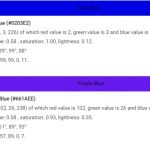HRTF stands for Head-Related Transfer Function. It’s a mathematical algorithm that calculates the sound heard by a person when they’re in an environment. The algorithm takes into account the person’s head size, shape, and position, as well as the location of the sound source. In other words, it predicts how sound will reach a person’s ears given their individual physiology.

HRTF is important for two reasons. First, it allows us to create realistic 3D audio experiences. By taking into account the way that sound waves interact with a person’s head, we can create virtual environments that sound just like the real world. Second, HRTF can be used to improve communication in noisy environments. By customizing the way that sounds are processed based on a person’s individual hearing, we can make sure that they’re able to hear what’s being said even in loud and chaotic situations.
Table of Contents
How Does HRTF Work?
The algorithm uses a combination of delay and filters to simulate the way that sound waves interact with a person’s head. The delay is used to account for the fact that sound waves take longer to reach the ears than they would if there was no head in the way. The filters are used to mimic the way that different parts of the head absorb and reflect sound waves.
HRTF is a complex topic, but understanding it is important for anyone who wants to create realistic 3D audio experiences or improve communication in noisy environments. By taking into account the individual physiology of each listener, we can create audio experiences that are tailored to their specific needs.
Advantages of HRTF
There are several advantages of using HRTF:
Create realistic 3D audio experiences
HRTFs are basically a set of filters that allow us to create realistic 3D audio experiences. When we listen to sounds coming from different directions, our brain uses these HRTFs to process the sound and create a three-dimensional image of the sound source.
This allows us to localize the sound in space and perceive its distance from us. Without HRTFs, we would only be able to hear sounds coming from one direction at a time, making it difficult to understand where the sound is coming from.
In other words, HRTFs are essential for creating realistic 3D audio experiences.
Improve communication in noisy environments
Among the many challenges faced by people working in noisy environments is the need to communicate effectively. One way to improve communication in these situations is to use HRTF.
HRTF is a tool that can be used to enhance the sound, making it easier to hear and understand speech in noisy environments. In addition to improved communication, HRTF can also provide other benefits, such as increased safety and efficiency.
By making it easier to hear and understand speech, HRTF can help people working in noisy environments to avoid accidents and stay productive.
Target individual physiology of each listener
HRTFs have another advantage in that they can be customized based on the individual physiology of each listener. This allows for a more personalized listening experience and can help to improve the fidelity of sound reproduction. Additionally, HRTFs can be designed to account for different head sizes and ear shapes, further increasing the accuracy of sound reproduction.
By accounting for individual differences, HRTFs offer a more immersive and realistic listening experience that is tailored to each listener. Consequently, HRTFs have the potential to improve the quality of sound reproduction for all listeners, regardless of their physiology.
Work for both headphones and speakers
When HRTF is used with headphones, it can help create a more realistic sense of spatialization, making it easier to localize sounds. When HRTF is used with speakers, it can help stationary sounds appear to move around the room, creating a more immersive listening experience. HRTF is a powerful tool that can be used to enhance the audio experience in both headphones and speakers.
Create virtual reality experiences
When you listen to music through headphones, HRTF helps you to localize the sound sources. This is because each earphone produces a different sound that is slightly delayed from the other. By combining these two signals, your brain is able to simulate the distance and direction of the sound source. This allows you to enjoy music with a greater sense of space and detail.
The same principle applies to speakers, which use HRTF to create a more immersive listening experience. By taking advantage of HRTF, both headphones and speakers can provide a more natural and realistic listening experience.





